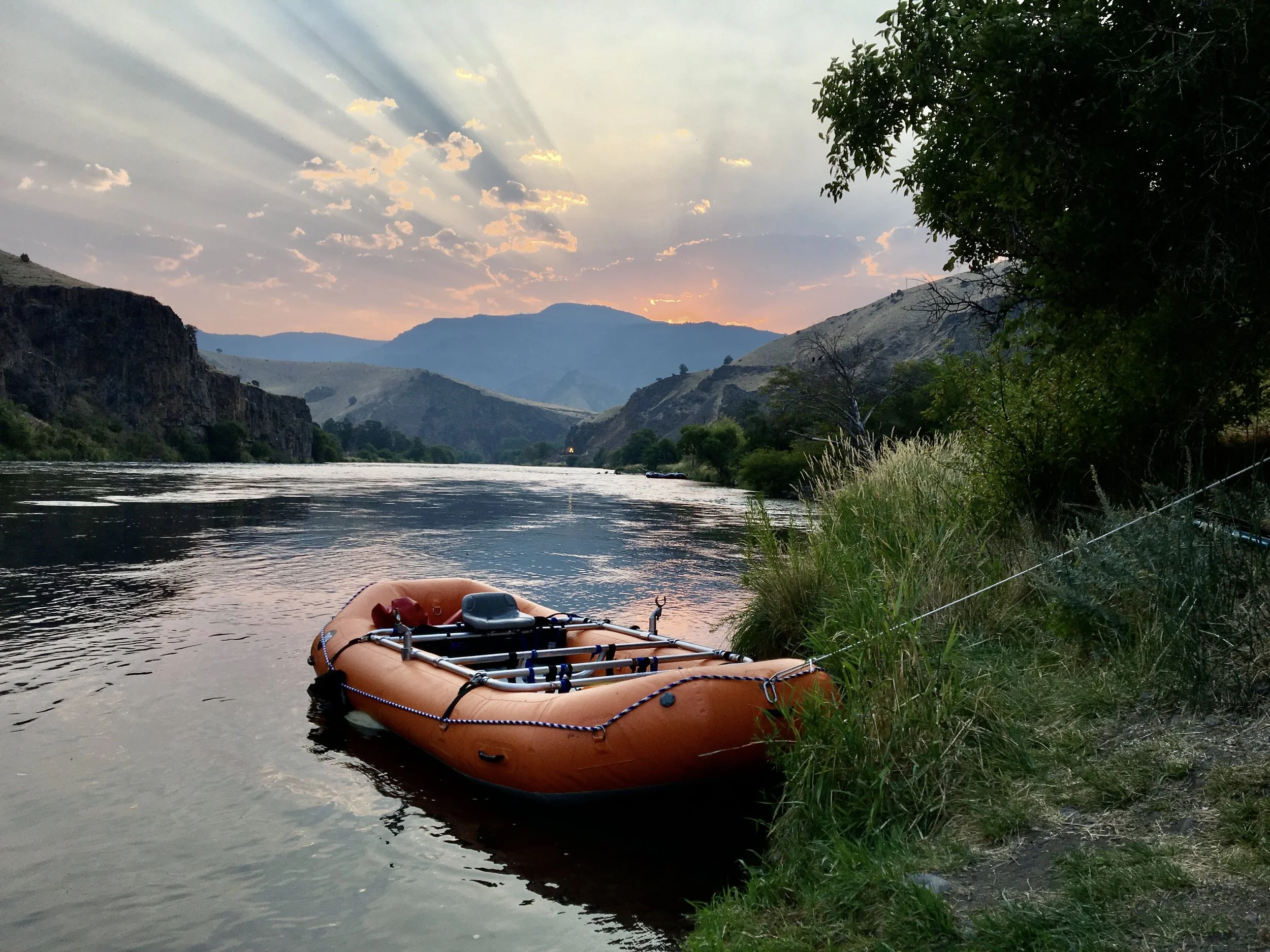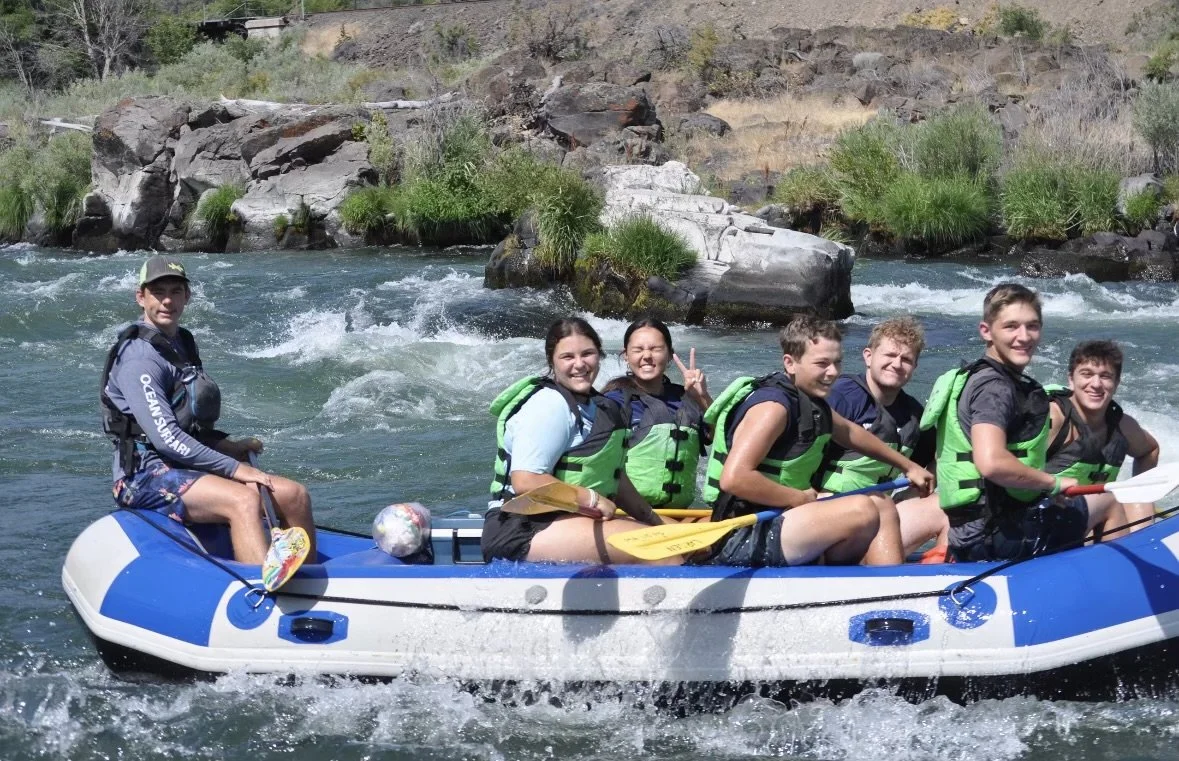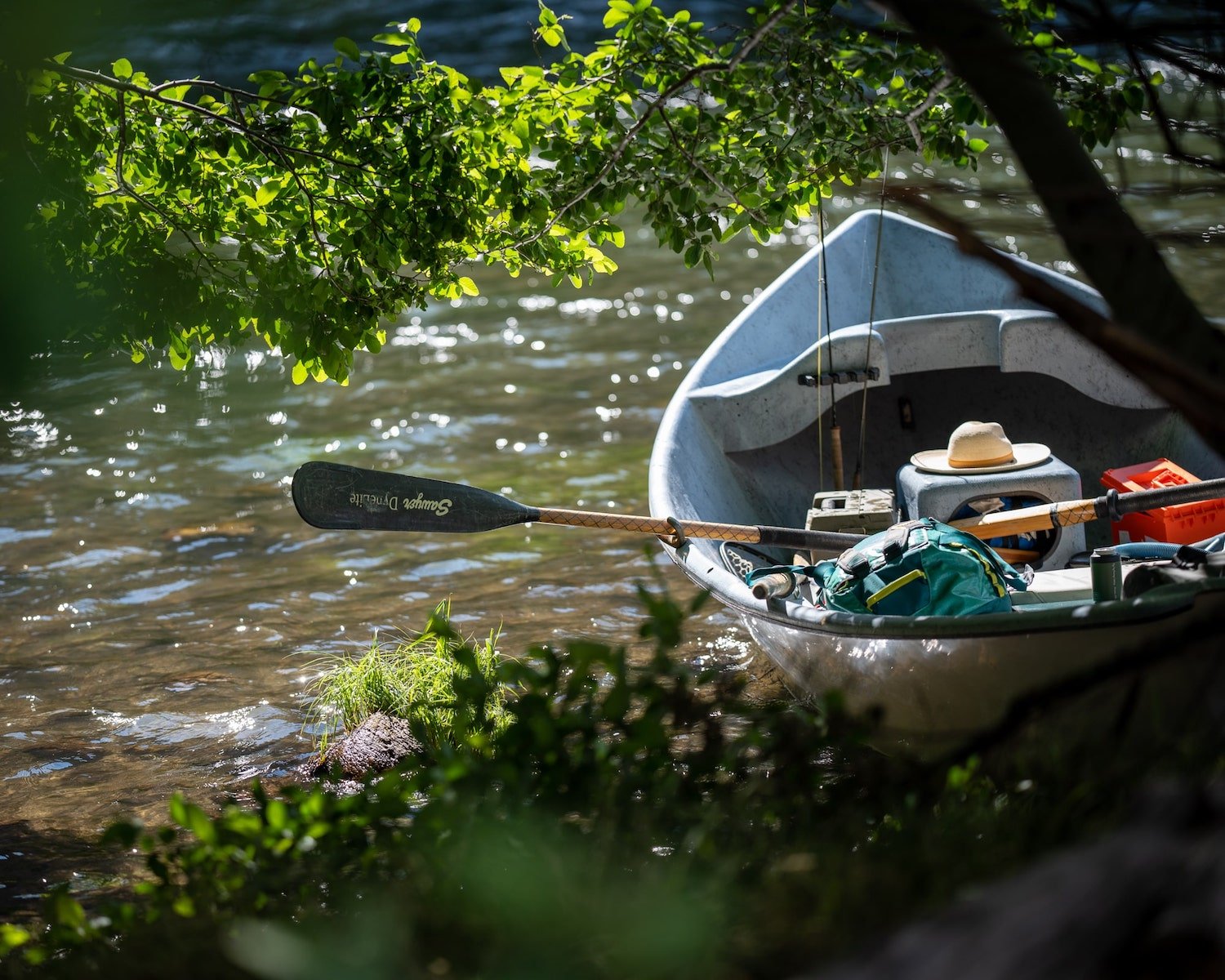The Deschutes Means Business
Moody Rapids, near the end of 100 Miles of Wild and Scenic lower Deschutes River. While its intangible assets are legendary, it’s also worth a fortune.
Show Me the Money
What’s a healthy lower Deschutes River worth? The non-monetary answers to this line of inquiry–those ethical and aesthetic reasons for preserving, protecting and restoring any valuable natural resource–are, for most of us, what motivates us to act on the river’s behalf.
But the river, and the economy that depends on its good health, has a monetary value as well. As the DRA intensifies its efforts to put cooler, cleaner water back into the lower Deschutes, the economic argument for doing so will be just as important as the ecological rationale.
Angling for Dollars, County by County
Unfortunately, there’s a dearth of Deschutes River specific economic studies to pick from, and surprisingly, none on the lower 100 miles below PGE’s Pelton Round Butte complex. In fact, the only Deschutes-specific study in the last 20 years was commissioned by Trout Unlimited, and was published in 2011. Completed by three University of Michigan researchers, it estimated that annual revenue generated in Deschutes-related tourism, recreation, hotel stays, travel, and real estate pumped $145 million ($220 million in 2025 dollars) into the region’s economy.
In 2019, Earth Economics, Travel Oregon and ODFW published a study that broke down outdoor recreation spending county-by-county in the state of Oregon. (It also breaks these numbers down by legislative district in the state, which savvy political staffers probably ought to be paying attention to.)
In Wasco and Sherman Counties, $147.1 million in outdoor rec related economic activity ($180 million in 2025 dollars) was spent. Jefferson County, which encompasses the flatwater recreation on Lake Billy Chinook, $59 million, adjusted for inflation. Deschutes County, which includes Bend and its fly-shops and guide services that cater to Deschutes fly-fishers but also a host of outdoor enthusiasts of every imaginable stripe: a whopping $433 million ($550 million in 2025 dollars.)
The Oregon Department of Fish and Wildlife took the time to estimate what percentage of these recreation income streams depends on trout, salmon and steelhead bearing streams. Wasco and Sherman County residents spend $7.6 million ($9.8 adjusted for inflation) on fishing every year. Deschutes County, an inflation-adjusted $34 million. (Curiously, Jefferson County, wherein lies Lake Billy Chinook, less than a million in angling dollars is generated.) While this study didn’t distinguish the proportion of this spending that stems from the Deschutes, other numbers corroborate a claim that the river is a vital part of Oregon’s economy.
The Value of Wild and Scenic
A 2017 study estimated the average value per-mile of a river’s designation under the National Wild and Scenic Rivers Act: $8 per river mile per household that recreates on a Wild and Scenic River, or a national average, aggregated across user-households, of $600,000 per river-mile ($792,000 in 2025 dollars.) The Deschutes, however, is far above that average. The lower Deschutes is the most popular river recreation destination in Oregon, and one of the most popular in the West, with more than 150,000 annual user-days per year. Some different ways of counting river use days between studies make it impossible to accurately estimate the increase in Wild and Scenic value due to the Deschutes’ higher volumes of traffic. Sticking to the lower average, the lower 100 miles of the Deschutes, designated in 1988 as a National Wild and Scenic River, is worth a minimum of $79.2 million annually.
What’s a Wild and Scenic River with healthy salmon runs in it worth? That same study scrutinized the value of another popular Oregon River, concluding that healthy salmon and steelhead runs in the two Wild and Scenic sections of the Rogue River added roughly ten percent to the economic value of that river’s federal protection under the Wild and Scenic Rivers Act. Should the Deschutes’ anadromous runs improve from middling to good or better, that added value could boost revenue streams on the lower Deschutes.
Methods of monetizing the value of natural resources might be debatable, but there’s no arguing with cold hard cash counted at the end of the day. Riggins, Idaho, a town similar in population size to Maupin, back in 2001 reaped the benefits of a banner year for salmon returns. In the three months of salmon fishing season that year, $10 million was pumped into Riggins’ small town economy.
Although the studies cited vary slightly, the conclusion is the same - the lower Deschutes River provides the economic backbone of the region. Over the long haul, the DRA would like to see a comprehensive study of the economy of the lower Deschutes. In the meantime, we’ll continue to operate on the principle that the water in the river we love is worth its weight in gold.
More From The Blog
Subscribe the the DRA Newsletter
The Deschutes River Alliance is your focused voice to protect the lower Deschutes River, its cold water flows and the fish and wildlife that are sustained by them. We send regular emails with important data and news about the lower Deschutes River. We will not sell or loan your contact information to others.
How to Support the DRA
Everyone wants clean, healthy water in the Deschutes River. Oregonians cherish our clean and healthy waterways to provide drinking water, wildlife habitat and recreational activities. The lower Deschutes River is a federally designated Wild & Scenic River, and a national treasure. It must be protected for the environmental and economic health of Central Oregon. We believe by working together we can return the lower Deschutes River to full health.






















